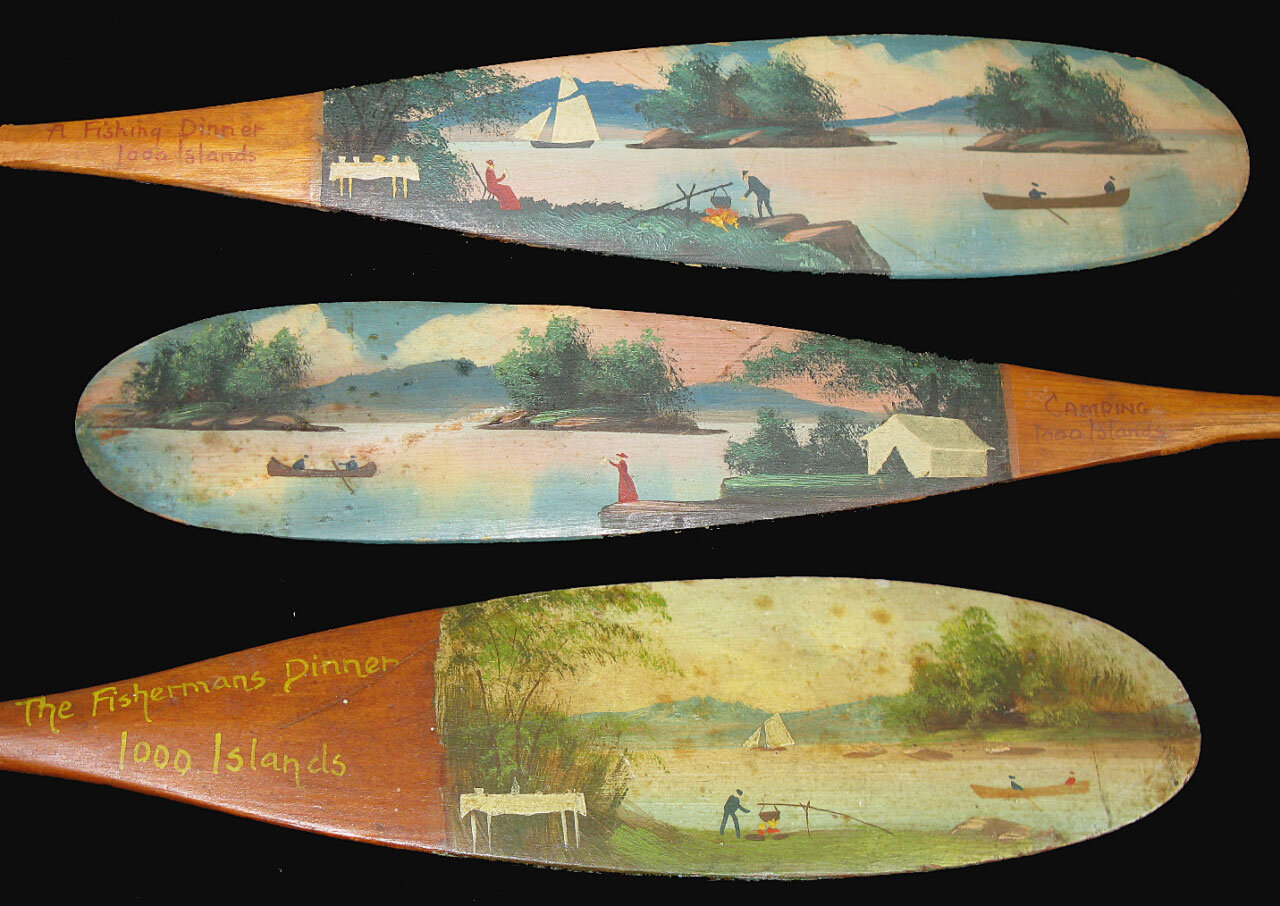Keech Souvenir Canoe Paddles
Keech paddles are well known to collectors of rustic accessories. They are appreciated for their finely-detailed, painted scenes, as well as for the delicate quality of each carved paddle. They date from 1890 to 1920 and can turn up anywhere in the U.S. and Canada, since they traveled home with far-flung vacationers who had visited upstate New York.
The maker of these paddles was Alpheus E. Keech (1855-1926) who lived most of his life near the St. Lawrence River in the 1000 Islands region of northern New York. He descended from a long line of men whose lives centered around water navigation; he was even named after a ship captain uncle who died in a wreck on Lake Erie.
When he was 30 years old, while still making a living as a carpenter in the family’s boat-building business, Alpheus began focusing his talents as an artist. In addition to producing large paintings of steamships, sailboats, and landscapes, he established a studio (pictured below) to make and sell small souvenirs, the most popular of which were his paint-decorated model canoe paddles.
For source of photo and Keech's life history details see www.thousandislandslife.com
The most elaborate paintings on his souvenir paddles were complete landscape scenes with hand-lettered titles such as “Camping,” “Autumn Scenery,” “Sunset,” “Lighthouse and Moonlight,” and “Fisherman’s Dinner.” Those with titles also usually included the subtitle “1000 Islands.”
Since he painted each paddle individually, there were variations among the details and color schemes even on paddles having the same theme. An example of such variation is seen in two of the paddles in our current inventory. One is titled “The Fishermans Dinner,” while the other is named “A Fishing Dinner.” They share a similar basic scene that includes a dining table set up on shore, a sailboat, a canoe, and islands. But one places four people at the dinner (including a woman in a red dress sitting on the shore), while the other shows only three people in the scene - one man on shore and two people in a boat. Differences in details such as these keep avid collectors searching for paddles with variations not already represented in their collections.
As a self-taught artist who produced goods for tourists, Keech perhaps fits the definition of a talented folk artist more than that of a fine artist. He found inspiration in his local roots and his appreciation for the beauty and function of the St. Lawrence seaway. By capturing scenes of early 20th century navigation and leisure life along an important waterway, he left behind a physical legacy that continues to inspire in the 21st century.

















